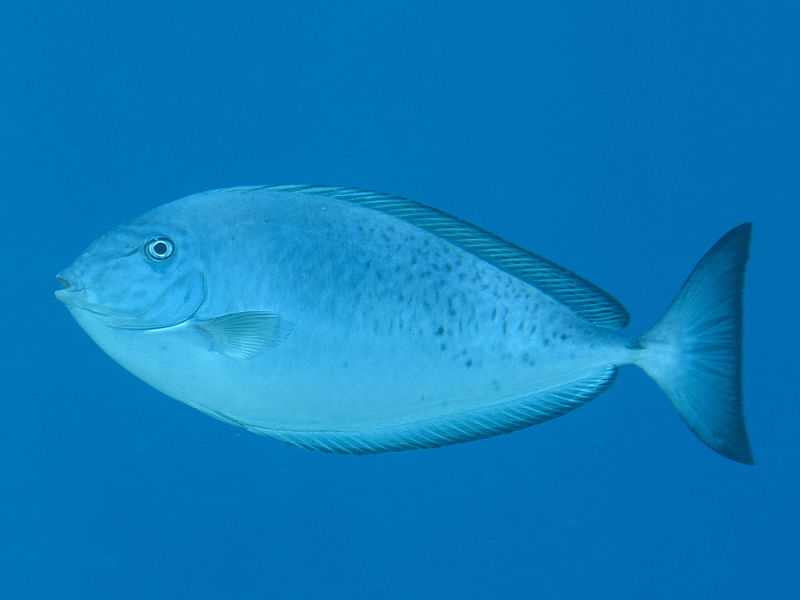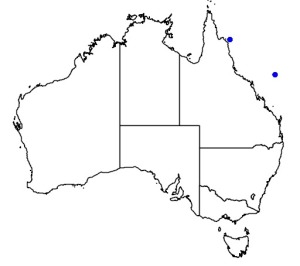
©Kendall Clements: A large individual of Naso caeruleacauda off the outer slope off Day Reef, Queensland. Identified by Prof. Kendall Clements.
Distinguishing features
A single caudal knife, straight head profile with no horn, usually a yellow patch beneath the pectoral fin and a blue tail.
The photographed individual is atypical but that may be due to its large size. See Comments below.
Size
- Size data has not been obtained.
Depth range
- Depth range data is not yet available.
Synonyms
Comments
** The following notes are by Kendall Clements, referring to his photo from Day Reef (17 Dec 2014). **
When looking more closely at the photo I realised that this has one caudal knife. Naso caesius has two. The posterior end of the single caudal knife here extends just beyond the start of the caudal fin, while the anterior end extends onto the rear of the caudal peduncle. In Naso caesius the anterior caudal knife sits completely on the caudal peduncle, while the posterior caudal knife sits posterior to a vertical line through the start of the caudal fin. So the caudal knife in the fish in my photo is basically in the middle of where the caudal knives are in caesius, so this doesn't look like a Naso caesius that has lost a caudal knife.
There are three species of Naso that have a single caudal knife: Naso caeruleacauda, Naso minor and Naso thynnoides. I have photographed the latter two on the outer reef before, and this is neither of those species. However, my fish doesn't have the yellow patch beneath the pectoral fin that's characteristic of caeruleacauda. It would be hard to tell if the caudal is blue, as the fish is underexposed, but the caudal doesn't look like it has a different colour to the rest of the body. I have not seen another photo of caeruleacauda with the blotches on the posterior body that are characteristic on many caesius (they can turn this on and off).
Naso caeruleacauda has four dorsal spines, and Naso caesius has 6-7. This has four. I have run this past Howard [Choat] and both of us think that this is Naso caeruleacauda. My fish seems bigger than those in almost all of the photos I've seen, and maybe they lose the yellow patch. Naso caeruleacauda has previously been recorded from the northern GBR according to Jack Randall's surgeonfish book. Rudie Kuiter reports it from the Coral Sea, which is where this was (front of Day Reef).
I posted this on iNaturalist because it appears to be a larger individual than represented in other photos of Naso caeruleacauda that I've seen. Jeff Williams classified it as Naso sp. as it has a smaller eye, deeper body and more rounded frontal profile that previously reported for Naso caeruleacauda. All of these characters are associated with larger size in Naso, so this would fit if this is Naso caeruleacauda. I pointed this out and said that the only alternative is that it's an undescribed species. Both Howard and I are happy to call this Naso caeruleacauda until someone comes up with a specimen or photo of an individual of this species that has the larger eye, shallower body, etc.
by Anne Hoggett
